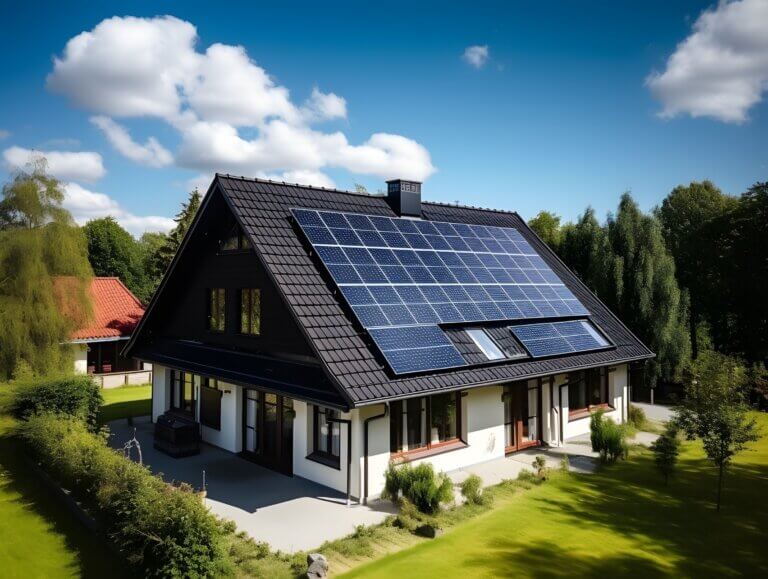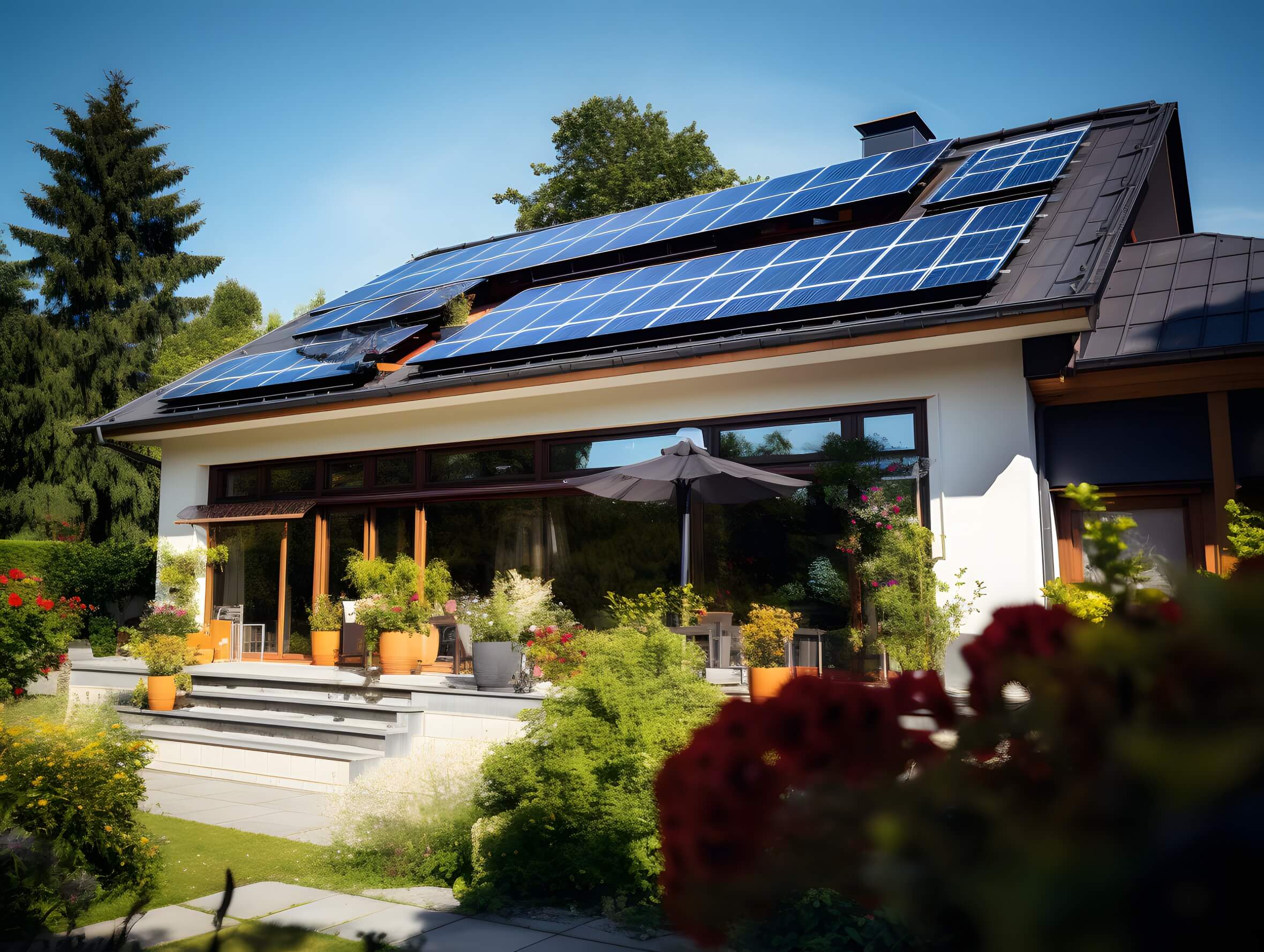5 Things to Consider If You Want to Install Solar Panels

Imagine waking up every morning and knowing that you’re generating your own energy in a clean and sustainable way. This is possible thanks to the installation of solar panels, an option that’s gaining more and more popularity and is transforming the way we think about energy consumption in our homes and businesses.
If you’re concerned about climate change and want to look for renewable sources of energy consumption, then you should know that investing in solar panels reduces long-term costs and contributes to environmental protection. But before making the decision to adopt this technology, you should consider several aspects to ensure an efficient and effective installation.
5 keys when installing solar panels
If you want to take advantage of the economic and environmental benefits of solar panels, it’s important that you make informed decisions to ensure that they fit your needs and lifestyle. Here are some relevant considerations to keep in mind.
1. Buy the solar panels that best suit your needs

Switching to renewable energy can bring many economic and environmental benefits. Fortunately, today, you can find different types of solar panels that can fit both your budget and your family’s needs. Here are some of the most popular models.
– Monocrystalline silicon solar panels
They’re highly valued for their exceptional efficiency in converting sunlight into electricity, achieving efficiency rates of between 15 and 24%. This makes them ideal for those seeking to maximize energy production in limited spaces, such as residential or small commercial rooftops.
– Polycrystalline silicon solar panels
Although these solar panels are less efficient than monocrystalline panels (13 to 20%), their more economical production makes them an attractive option for projects where budgets are tight. They’re durable and suitable for most sunlight conditions, making them a great recommendation for commercial and residential installations.
– Thin film solar panels
These panels are composed of thin layers of semiconductor materials such as cadmium, cadmium telluride (CdTe), amorphous silicon (a-Si), or CIGS (copper-indium-gallium-selenium). Although they have a conversion efficiency of between 7% and 13%, they can generate electricity even under diffuse light conditions and high temperatures.
– Bifacial solar panels
They’re characterized by capturing sunlight from both sides of the panel, improving the overall energy conversion efficiency. This makes them suitable for areas with high reflectivity, such as desert regions or industrial facilities, where reflected sunlight is abundant.
2. Evaluate the appropriate location and orientation
Before purchasing your solar panels, it’s important to evaluate the location where they’ll be installed and their orientation in order to ensure that they capture the maximum amount of direct sunlight throughout the day. This is essential to generating as much energy as possible.
For example, in the northern hemisphere, orienting the panels toward the south and adjusting the angle of inclination according to the local latitude optimizes sunlight capture and, therefore, increases energy production. In turn, evaluating possible sources of shade, such as trees, buildings, or other structures, is essential to minimizing yield losses.
3. Calculate the electrical capacity you need

To meet your home’s energy needs, it’s crucial to calculate the electrical capacity you require before purchasing a solar panel system. The first thing to do is to determine your average monthly energy consumption in kilowatt-hours (kWh) from your electric bills.
Then, divide this monthly consumption by 30 days to get your average daily consumption in kWh. Finally, apply a solar system loss and efficiency factor, which typically ranges from 75-80%, to adjust for conversion losses.
For example, if your average daily consumption is 30 kWh and you use a 75% loss factor, the solar system capacity needed would be approximately 40 kWh per day (30 kWh / 0.75).
4. Establish a budget and look for financing options
Switching to renewable energy through solar panels can help you save money in the future. However, the initial investment can be high. and it’s crucial to establish a clear budget to avoid setbacks.
To do this, calculate the total costs of the system, including the purchase of equipment, installation, and any additional costs such as permits and maintenance. Once the budget is established, look for financing options that fit your needs.
This may include solar-specific loans offered by banks or state financing programs with favorable interest rates. Keep in mind that some cities offer tax credits and low-interest loans aimed at encouraging residential solar adoption. So, be sure to take advantage of them.
5. Consult regulations and permits
Before proceeding with the installation of solar panels, it’s essential to research and comply with local regulations and obtain the necessary permits. This is because each area may have specific regulations that affect the location and method of the installation of solar panels.
This involves submitting appropriate documentation to the local municipal or governmental authorities to comply with grid connection requirements, including specific procedures and safety regulations that must be followed to ensure a safe and legal installation of solar panels.
Go ahead and install solar panels on your home
By harnessing the sun’s energy, homeowners can enjoy significant savings on their electricity bills, mitigate dependence on non-renewable energy sources, and contribute to reducing their carbon footprint.
So keep in mind the above recommendations, and if you’re interested in acquiring solar panels, try to be very careful and visit certified sellers that provide guaranteed products of excellent quality to gradually recover the initial investment.
Imagine waking up every morning and knowing that you’re generating your own energy in a clean and sustainable way. This is possible thanks to the installation of solar panels, an option that’s gaining more and more popularity and is transforming the way we think about energy consumption in our homes and businesses.
If you’re concerned about climate change and want to look for renewable sources of energy consumption, then you should know that investing in solar panels reduces long-term costs and contributes to environmental protection. But before making the decision to adopt this technology, you should consider several aspects to ensure an efficient and effective installation.
5 keys when installing solar panels
If you want to take advantage of the economic and environmental benefits of solar panels, it’s important that you make informed decisions to ensure that they fit your needs and lifestyle. Here are some relevant considerations to keep in mind.
1. Buy the solar panels that best suit your needs

Switching to renewable energy can bring many economic and environmental benefits. Fortunately, today, you can find different types of solar panels that can fit both your budget and your family’s needs. Here are some of the most popular models.
– Monocrystalline silicon solar panels
They’re highly valued for their exceptional efficiency in converting sunlight into electricity, achieving efficiency rates of between 15 and 24%. This makes them ideal for those seeking to maximize energy production in limited spaces, such as residential or small commercial rooftops.
– Polycrystalline silicon solar panels
Although these solar panels are less efficient than monocrystalline panels (13 to 20%), their more economical production makes them an attractive option for projects where budgets are tight. They’re durable and suitable for most sunlight conditions, making them a great recommendation for commercial and residential installations.
– Thin film solar panels
These panels are composed of thin layers of semiconductor materials such as cadmium, cadmium telluride (CdTe), amorphous silicon (a-Si), or CIGS (copper-indium-gallium-selenium). Although they have a conversion efficiency of between 7% and 13%, they can generate electricity even under diffuse light conditions and high temperatures.
– Bifacial solar panels
They’re characterized by capturing sunlight from both sides of the panel, improving the overall energy conversion efficiency. This makes them suitable for areas with high reflectivity, such as desert regions or industrial facilities, where reflected sunlight is abundant.
2. Evaluate the appropriate location and orientation
Before purchasing your solar panels, it’s important to evaluate the location where they’ll be installed and their orientation in order to ensure that they capture the maximum amount of direct sunlight throughout the day. This is essential to generating as much energy as possible.
For example, in the northern hemisphere, orienting the panels toward the south and adjusting the angle of inclination according to the local latitude optimizes sunlight capture and, therefore, increases energy production. In turn, evaluating possible sources of shade, such as trees, buildings, or other structures, is essential to minimizing yield losses.
3. Calculate the electrical capacity you need

To meet your home’s energy needs, it’s crucial to calculate the electrical capacity you require before purchasing a solar panel system. The first thing to do is to determine your average monthly energy consumption in kilowatt-hours (kWh) from your electric bills.
Then, divide this monthly consumption by 30 days to get your average daily consumption in kWh. Finally, apply a solar system loss and efficiency factor, which typically ranges from 75-80%, to adjust for conversion losses.
For example, if your average daily consumption is 30 kWh and you use a 75% loss factor, the solar system capacity needed would be approximately 40 kWh per day (30 kWh / 0.75).
4. Establish a budget and look for financing options
Switching to renewable energy through solar panels can help you save money in the future. However, the initial investment can be high. and it’s crucial to establish a clear budget to avoid setbacks.
To do this, calculate the total costs of the system, including the purchase of equipment, installation, and any additional costs such as permits and maintenance. Once the budget is established, look for financing options that fit your needs.
This may include solar-specific loans offered by banks or state financing programs with favorable interest rates. Keep in mind that some cities offer tax credits and low-interest loans aimed at encouraging residential solar adoption. So, be sure to take advantage of them.
5. Consult regulations and permits
Before proceeding with the installation of solar panels, it’s essential to research and comply with local regulations and obtain the necessary permits. This is because each area may have specific regulations that affect the location and method of the installation of solar panels.
This involves submitting appropriate documentation to the local municipal or governmental authorities to comply with grid connection requirements, including specific procedures and safety regulations that must be followed to ensure a safe and legal installation of solar panels.
Go ahead and install solar panels on your home
By harnessing the sun’s energy, homeowners can enjoy significant savings on their electricity bills, mitigate dependence on non-renewable energy sources, and contribute to reducing their carbon footprint.
So keep in mind the above recommendations, and if you’re interested in acquiring solar panels, try to be very careful and visit certified sellers that provide guaranteed products of excellent quality to gradually recover the initial investment.
All cited sources were thoroughly reviewed by our team to ensure their quality, reliability, currency, and validity. The bibliography of this article was considered reliable and of academic or scientific accuracy.
- Pukocz, E. (2023). Different types of solar panels - what’s the best? Otovo UK. Consultado el 1 de julio de 2024. https://www.otovo.co.uk/blog/photovoltaic-systems/different-types-of-solar-panels-whats-the-best-choice/







